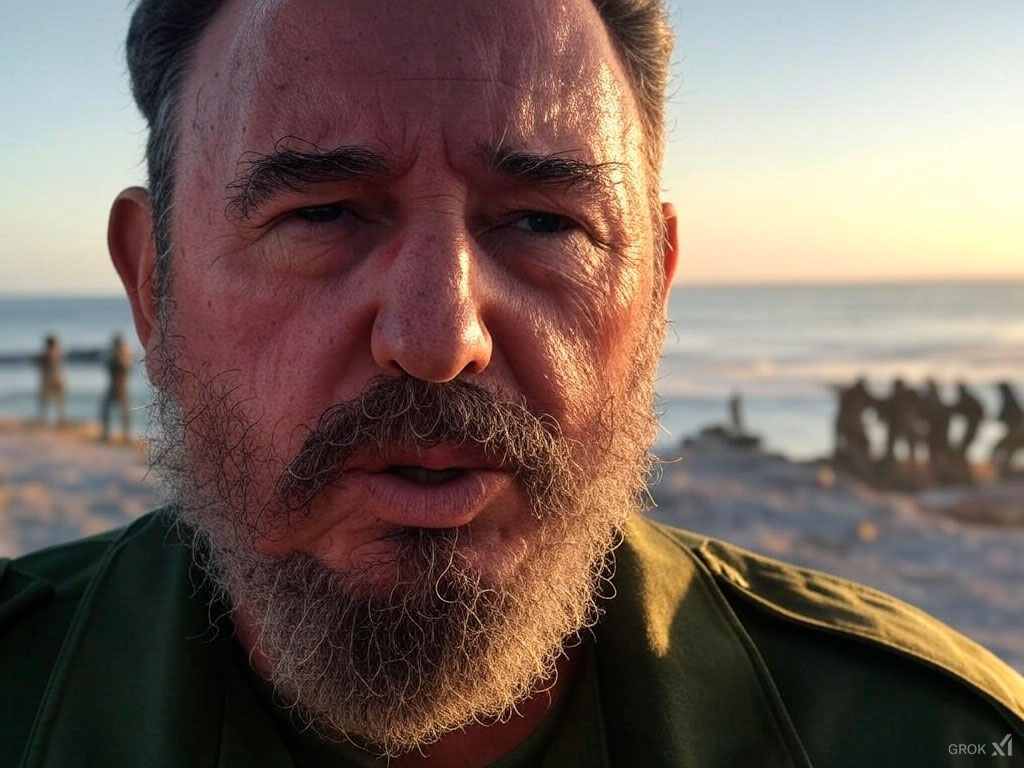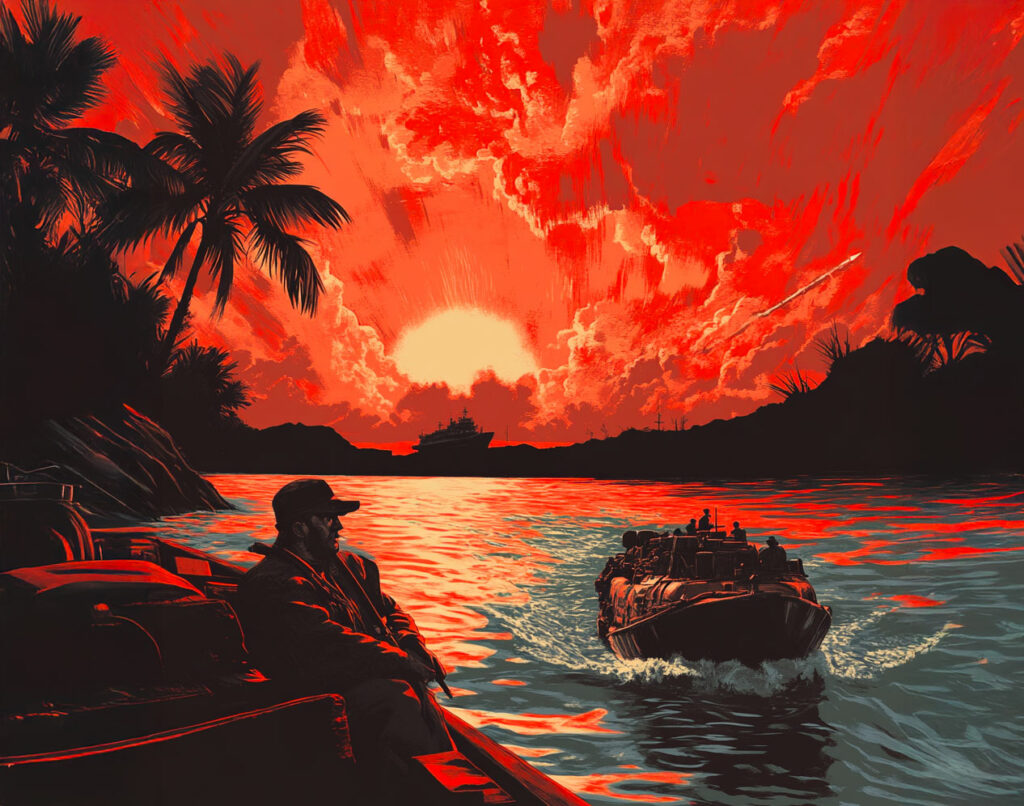An in-depth analysis of the 1961 Bay of Pigs Invasion, exploring its causes, key players, significant events, and lasting consequences.
In April 1961, approximately 1,400 Cuban exiles, trained and funded by the U.S. Central Intelligence Agency (CIA), launched an invasion at the Bay of Pigs on Cuba’s southern coast. The operation aimed to overthrow Fidel Castro’s government. However, the plan quickly unraveled. The initial air strikes failed to neutralize Castro’s air force, leaving the invaders vulnerable. Upon landing, they encountered unexpected resistance from Cuban forces. The anticipated popular uprising against Castro did not materialize. Within three days, the majority of the invaders were captured or killed. The failed invasion embarrassed the U.S. government, strengthened Castro’s position in Cuba, and deepened Cold War tensions, leading to the Cuban Missile Crisis in 1962.
What Were the Reasons for the Bay of Pigs Invasion (1961)
The Bay of Pigs Invasion was primarily driven by the United States’ desire to remove Fidel Castro from power. After Castro’s 1959 revolution ousted Fulgencio Batista, Cuba began nationalizing industries, many of which were owned by American businesses. This move strained U.S.-Cuban relations. Additionally, Castro’s alignment with the Soviet Union during the Cold War heightened U.S. concerns about a communist stronghold just 90 miles from its shores.
In March 1960, President Dwight D. Eisenhower authorized the CIA to develop a plan to overthrow Castro. The strategy involved training Cuban exiles for a guerrilla warfare campaign. The underlying assumption was that the Cuban populace would support an uprising against Castro, leading to his downfall.
The plan evolved into a full-scale invasion. The CIA believed that a successful landing would inspire mass defections from Castro’s military and spark a nationwide revolt. However, this assumption was flawed. Intelligence reports underestimated Castro’s support within Cuba and overestimated the readiness of the Cuban people to rise against him.
Furthermore, the U.S. aimed to prevent the spread of communism in the Western Hemisphere. The Domino Theory, prevalent at the time, suggested that if one country fell to communism, neighboring countries would follow. By removing Castro, the U.S. hoped to halt the perceived spread of Soviet influence in Latin America.

Who Was Involved in the Bay of Pigs Invasion (1961)
Several key parties played significant roles in the Bay of Pigs Invasion:
- The United States Government: Under President John F. Kennedy, who inherited the invasion plan from the Eisenhower administration, the U.S. government authorized and funded the operation. The CIA was responsible for planning and executing the invasion, including training the exile force and coordinating logistics.
- Cuban Exiles: The invasion force, known as Brigade 2506, consisted of approximately 1,400 Cuban exiles who had fled Castro’s regime. These individuals were trained by the CIA in Guatemala and were equipped with U.S. weapons and supplies. They were motivated by a desire to reclaim their homeland and overthrow Castro.
- Cuban Government Forces: Led by Fidel Castro, the Cuban government mobilized its military to defend against the invasion. The Cuban Revolutionary Armed Forces, along with local militias, played a crucial role in repelling the invaders.
- Soviet Union: While not directly involved in the invasion, the Soviet Union was a significant ally of Castro’s Cuba. The alliance between Cuba and the Soviet Union was a primary concern for the U.S., influencing its decision to support the invasion.
- Central Intelligence Agency (CIA): The CIA orchestrated the training, arming, and logistical support for Brigade 2506. Key figures within the agency, such as Director Allen Dulles and Deputy Director for Plans Richard M. Bissell Jr., were instrumental in developing and promoting the invasion plan.
- Latin American Countries: Nations like Guatemala and Nicaragua provided training grounds and staging areas for the exile forces, often with the support or coercion of the U.S. government.
In essence, the Bay of Pigs Invasion was a complex operation involving the U.S. government, Cuban exiles, the Cuban government, and international allies, each with their own motivations and roles.
The Leaders of the Bay of Pigs Invasion (1961)
Several leaders were pivotal in the events surrounding the Bay of Pigs Invasion:
- Fidel Castro: As the Prime Minister of Cuba, Castro was the primary target of the invasion. He personally took command of the Cuban forces during the invasion, coordinating the defense and ultimately leading to the defeat of the invaders.
- John F. Kennedy: The President of the United States at the time, Kennedy authorized the invasion plan shortly after taking office. He faced significant criticism for the operation’s failure and its subsequent political fallout.
- Allen Dulles: Serving as the Director of Central Intelligence, Dulles oversaw the CIA’s planning and execution of the invasion. He was a strong proponent of the operation and believed in its potential success.
- Richard M. Bissell Jr.: As the CIA’s Deputy Director for Plans, Bissell was directly responsible for the development and implementation of the invasion strategy. He played a key role in briefing President Kennedy and advocating for the operation.
- José Miró Cardona: A former Cuban Prime Minister, Miró Cardona led the Cuban Revolutionary Council, a group of exiled leaders who were intended to assume control of Cuba had the invasion succeeded.
- José Ramón Fernández: A Cuban military commander, Fernández was tasked by Castro to lead the initial counter-offensive against the invading forces at the Bay of Pigs.
These leaders, among others, shaped the course of the Bay of Pigs Invasion through their decisions and actions, influencing its planning, execution, and aftermath.
Was There a Decisive Moment?
The Bay of Pigs Invasion featured several critical moments that influenced its outcome. One particularly decisive event was the failure of the initial air strikes on April 15, 1961. The plan called for CIA-supplied B-26 bombers to destroy Cuban airfields, aiming to neutralize Castro’s air force. However, the strikes were only partially successful, leaving several operational aircraft that later attacked the invading forces.
Another pivotal moment occurred during the landing on April 17. The invasion force faced unexpected resistance from local militias and Cuban government forces. The anticipated popular uprising against Castro did not occur, leaving the invaders isolated.
A significant decision point was President Kennedy’s choice to cancel additional air support. Concerned about revealing direct U.S. involvement, Kennedy withheld further air strikes, depriving the invasion force of critical support. This decision allowed Cuban forces to regain air superiority and disrupt the invaders’ movements.
On April 18, the invaders attempted to secure the Girón airstrip for reinforcements but were met with heavy resistance. Cuban T-33 jets and Sea Fury aircraft strafed and bombed the exile forces, preventing supply drops. By April 19, Brigade 2506 was overwhelmed, running low on ammunition and supplies. Many fighters attempted to retreat into swamps, but most were captured.
These key moments sealed the fate of the invasion. The lack of U.S. air support, the failure of the initial air strikes, and Castro’s rapid military response ensured the operation’s failure within 72 hours.

Major Battles of the Bay of Pigs Invasion (1961)
The Bay of Pigs Invasion was a brief but intense conflict marked by multiple engagements. The most significant clashes occurred between April 17 and April 19, 1961.
1. The Air Strikes on April 15, 1961
The operation began with a CIA-orchestrated bombing campaign targeting Cuban airfields. Eight B-26 bombers, disguised to look like Cuban aircraft, attempted to destroy Castro’s air force. The attack only damaged some planes and left several operational. This failure allowed Cuba to maintain air superiority, which would prove crucial in repelling the invasion.
2. The Landing at Playa Girón – April 17, 1961
At dawn, 1,400 Cuban exiles of Brigade 2506 landed at Playa Girón (Bay of Pigs). They expected minimal resistance but encountered 2,000 Cuban troops, including militia and police units. The landing force struggled against heavy gunfire, and their equipment was ill-suited for the swampy terrain. The Cuban Air Force bombed supply ships, sinking two, which cut off reinforcements and supplies.
3. Battle for San Blas – April 17, 1961
A secondary force attempted to advance inland from San Blas to secure roads leading to Havana. Cuban army units, reinforced by T-34 tanks, quickly ambushed and repelled the invaders. Poor coordination and lack of local support forced the exiles to retreat.
4. The Counterattack at Playa Larga – April 18, 1961
By April 18, Castro mobilized over 20,000 troops. At Playa Larga, Cuban government forces launched an organized counteroffensive. Exile forces, now outnumbered, suffered heavy casualties. With no reinforcement or additional air cover, they were pushed back.
5. The Final Stand at Playa Girón – April 19, 1961
By the final day, Brigade 2506 had no ammunition, food, or reinforcements. Cuban forces surrounded them, using artillery and tanks to finish the battle. The last resistance ended by midday on April 19, with over 1,200 exiles captured and 114 killed.
Was There a Turning Point? (350 words)
The invasion had several key turning points, but the most significant was President Kennedy’s decision to withhold additional air support. Without it, the exiles were left vulnerable to Cuban air attacks.
Another major factor was Castro’s rapid response. Within 24 hours, he mobilized thousands of troops, organized defensive positions, and launched counterattacks. The exile forces expected a prolonged engagement, but the speed and scale of the Cuban response eliminated any chance of a prolonged resistance.
The sinking of supply ships also marked a shift in the battle. With two ships destroyed and others forced to retreat, the invaders lost crucial ammunition, reinforcements, and medical supplies.
By April 18, it was evident the invasion had failed. The exiles were stranded, outgunned, and unable to receive reinforcements. The final surrender on April 19 confirmed the mission’s failure.
Consequences of the Bay of Pigs Invasion (1961)
The Bay of Pigs Invasion had lasting consequences for Cuba, the U.S., and global Cold War politics.
1. Strengthening of Fidel Castro’s Regime
The invasion boosted Castro’s domestic and international standing. He used the failed attack as evidence of U.S. aggression, rallying Cuban nationalism. In response, Cuba intensified its crackdown on political dissent and aligned itself more closely with the Soviet Union.
2. U.S. Humiliation and CIA Reevaluation
The failure embarrassed the Kennedy administration. It revealed major flaws in CIA intelligence, planning, and execution. As a result, Kennedy ordered an internal review of covert operations, leading to the eventual resignation of CIA Director Allen Dulles.
3. Escalation of U.S.-Cuba-Soviet Relations
After the invasion, Cuba and the Soviet Union deepened their military alliance. Castro requested Soviet military aid, leading to the installation of nuclear missiles in Cuba in 1962, triggering the Cuban Missile Crisis—one of the most tense moments of the Cold War.
4. Impact on Latin America
The invasion strengthened anti-U.S. sentiment across Latin America. Many countries saw the operation as U.S. imperialism, leading to the rise of anti-American movements.
5. The Fate of the Captured Invaders
Of the 1,400 invaders, over 1,200 were captured. They were held in Cuban prisons for nearly two years before the U.S. negotiated their release in exchange for $53 million in food and medicine.
The Bay of Pigs was a military and political disaster for the U.S. and a defining moment for Cuba’s role in the Cold War.
Back to the Wars section